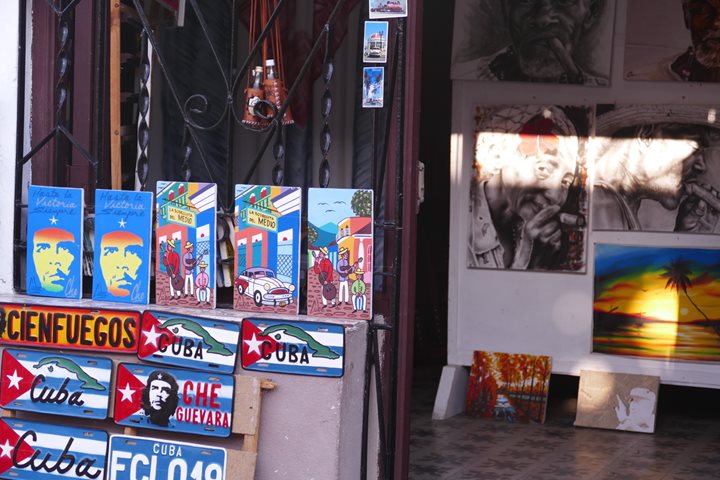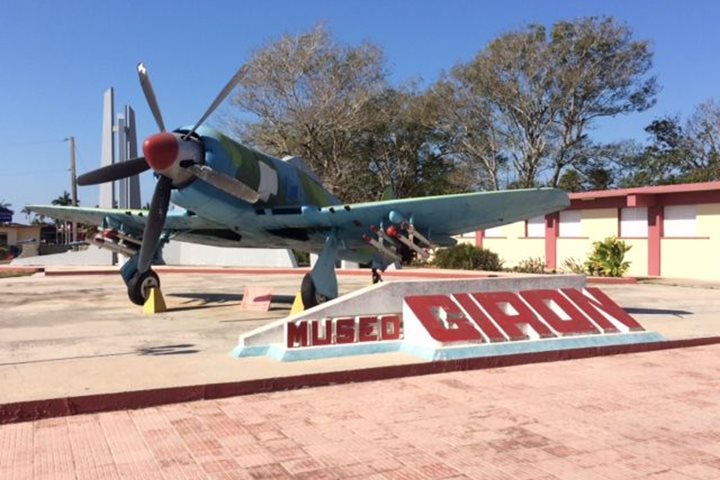It is the end of our second day in Havana (La Habana in Spanish), capital of the largest island in the Caribbean: Cuba. As I sit down to write our Daily Expedition Report, I hardly know where to even start. I, as I am sure we all are, am feeling a strange mixture of awe, excitement, and anticipation, as though we have just started to uncover the very tip of a (very tropical!) iceberg: a complex country full of contradictions, highs and lows. The last two days have been an absolute feast of the senses: impressions of sight, taste, and sound swirling around our heads, nicely warmed by the most delightful of climes–sunny, breezy, and warm.
The early peoples of Cuba left little mark on its landscape (though can still be detected in place names and spoken language). However, unlike other Caribbean islands, the Spanish had a strong presence here for over 400 years, since the European “discovery” of Cuba in October 1492, giving it a strong colonial feel reminiscent of parts of Central and South America. It was also under British rule for just under a year in 1762, under U.S. hegemony for many years after its independence from Spain, and then under heavy Soviet influence for years after the revolution and the arising of the Communist Party. Not to mention the massive influence of African culture injected into the island by the slave trade that prospered during the apex of the sugar era.
Thankfully, as well-put by Urban Designer and architect Pedro Vasquez, who we were privileged to hear talk this evening at our landmark hotel, the Nacional, Havana was a city that grew by addition rather than substitution. The end product is a crazy mélange of architectural styles that boggles the mind. This trend of maintaining the previous architectural styles was strengthened further by the Urban Reform Law passed in 1960, giving every Cuban citizen the right to live rent-free and own the properties they were currently residing in. This was a two-sided coin, since on one hand it meant there was no incentive to knock down and build new structures, but on the other hand it also meant no incentive to invest in the care and maintenance of old structures, giving the whole city an air of crumbling grandeur. So what was conceived as a great social law, eliminating homelessness, was sadly also an example of tragic Urban Management. Any sadness that might arise from seeing the sorry state of many once-beautiful buildings is offset, however, by the crazy amount of exuberant colour everywhere! Even drab, Soviet-style concrete apartment blocks are painted gaudy colours, in what Professor Vasquez so unforgettably termed “Salsa Communism”!
And the same mind-boggling cultural mix that is evident in the architecture of the place is equally as evident in the wonderful food we have been tasting in the local “Paladares” (private eateries) and state run restaurants, and even more so in the wonderful beats, rhythms and harmonies that characterize the incredible Cuban sound. We are engulfed by salsa and Cuban Son everywhere we go: encouraging and cheering the tireless workers at the cigar factories, accompanying the mechanics busy restoring magnificent 1950s American cars in local garages, and putting a hop in the step of pedestrians everywhere! Ageless Cuban guitarists sit on street corners; bands made up by wind, string, and percussion instruments entertain at every restaurant–it is impossible not to rejoice! And one of the most exhilarating experiences of all was witnessing the energetic fusion of Spanish and Afro-Caribbean rhythms and dances during our visit to the Habana Compas Dance company–both an internationally acclaimed act and a school teaching young Cuban children about their complex cultural ancestry.
So much has been seen, heard, tasted, and learned in the last two days that we cannot help but wonder what the rest of our adventure holds in store!







